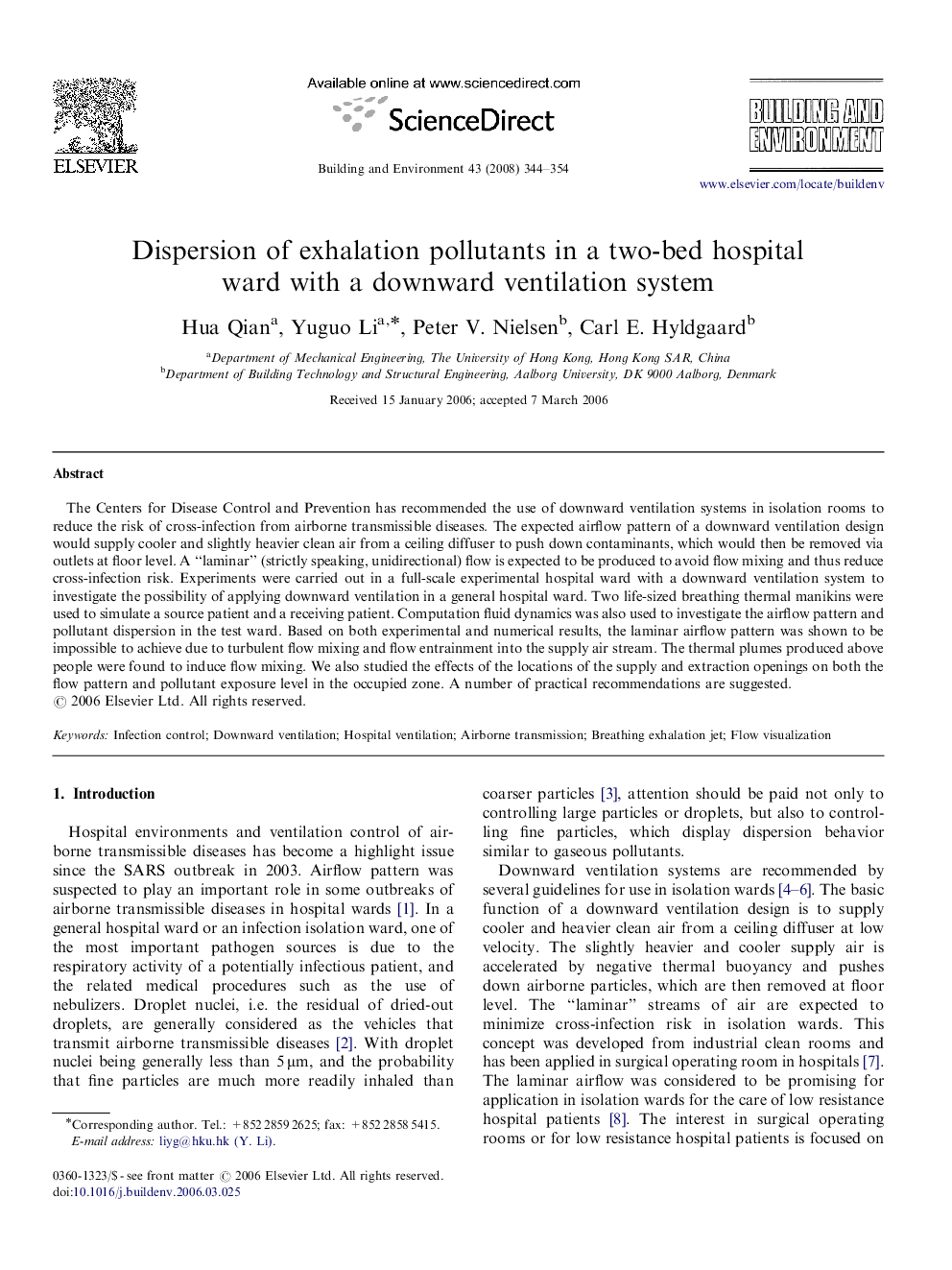| Article ID | Journal | Published Year | Pages | File Type |
|---|---|---|---|---|
| 249874 | Building and Environment | 2008 | 11 Pages |
The Centers for Disease Control and Prevention has recommended the use of downward ventilation systems in isolation rooms to reduce the risk of cross-infection from airborne transmissible diseases. The expected airflow pattern of a downward ventilation design would supply cooler and slightly heavier clean air from a ceiling diffuser to push down contaminants, which would then be removed via outlets at floor level. A “laminar” (strictly speaking, unidirectional) flow is expected to be produced to avoid flow mixing and thus reduce cross-infection risk. Experiments were carried out in a full-scale experimental hospital ward with a downward ventilation system to investigate the possibility of applying downward ventilation in a general hospital ward. Two life-sized breathing thermal manikins were used to simulate a source patient and a receiving patient. Computation fluid dynamics was also used to investigate the airflow pattern and pollutant dispersion in the test ward. Based on both experimental and numerical results, the laminar airflow pattern was shown to be impossible to achieve due to turbulent flow mixing and flow entrainment into the supply air stream. The thermal plumes produced above people were found to induce flow mixing. We also studied the effects of the locations of the supply and extraction openings on both the flow pattern and pollutant exposure level in the occupied zone. A number of practical recommendations are suggested.
